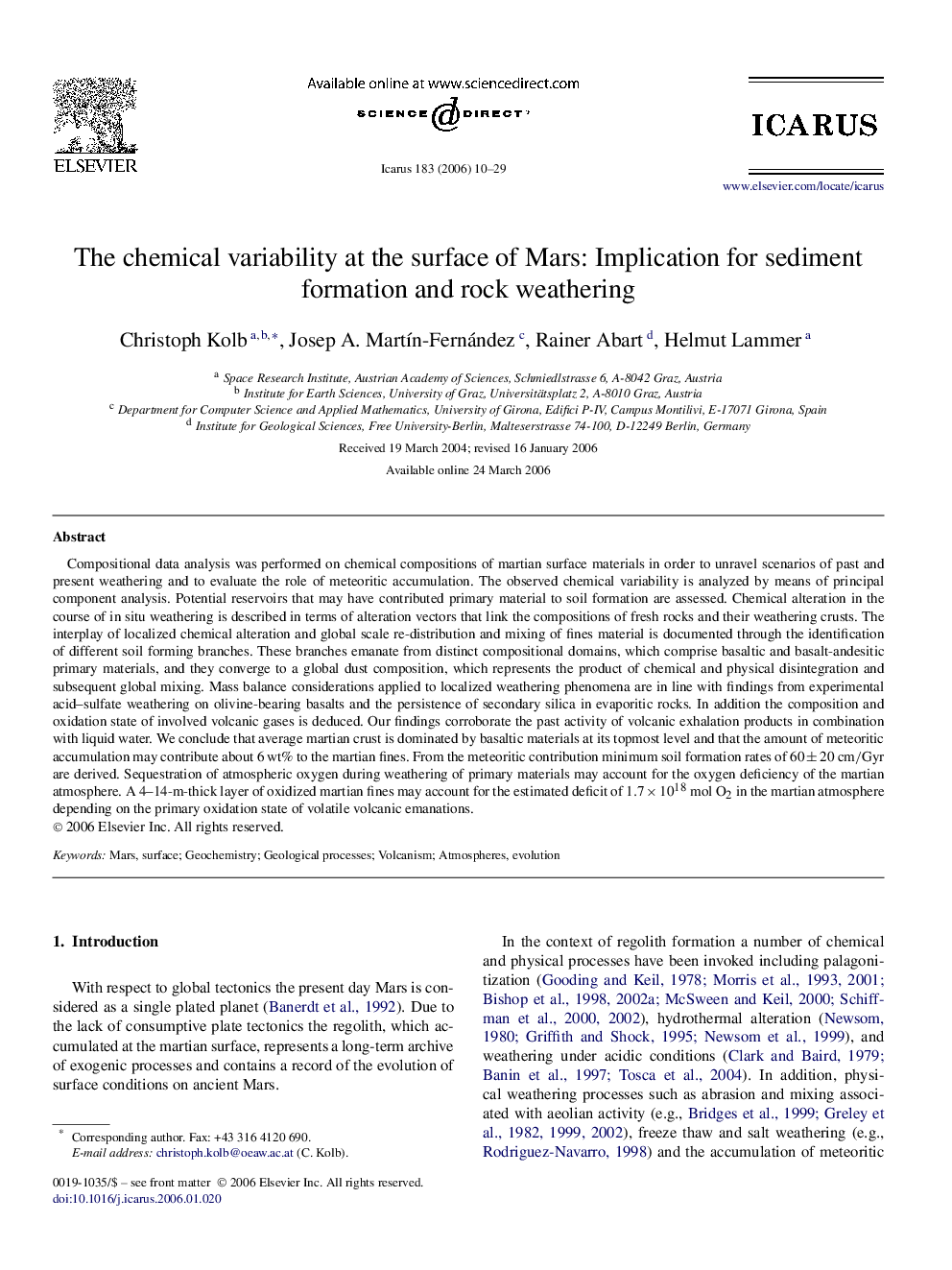| Article ID | Journal | Published Year | Pages | File Type |
|---|---|---|---|---|
| 1776072 | Icarus | 2006 | 20 Pages |
Compositional data analysis was performed on chemical compositions of martian surface materials in order to unravel scenarios of past and present weathering and to evaluate the role of meteoritic accumulation. The observed chemical variability is analyzed by means of principal component analysis. Potential reservoirs that may have contributed primary material to soil formation are assessed. Chemical alteration in the course of in situ weathering is described in terms of alteration vectors that link the compositions of fresh rocks and their weathering crusts. The interplay of localized chemical alteration and global scale re-distribution and mixing of fines material is documented through the identification of different soil forming branches. These branches emanate from distinct compositional domains, which comprise basaltic and basalt-andesitic primary materials, and they converge to a global dust composition, which represents the product of chemical and physical disintegration and subsequent global mixing. Mass balance considerations applied to localized weathering phenomena are in line with findings from experimental acid–sulfate weathering on olivine-bearing basalts and the persistence of secondary silica in evaporitic rocks. In addition the composition and oxidation state of involved volcanic gases is deduced. Our findings corroborate the past activity of volcanic exhalation products in combination with liquid water. We conclude that average martian crust is dominated by basaltic materials at its topmost level and that the amount of meteoritic accumulation may contribute about 6 wt% to the martian fines. From the meteoritic contribution minimum soil formation rates of 60±20 cm/Gyr60±20 cm/Gyr are derived. Sequestration of atmospheric oxygen during weathering of primary materials may account for the oxygen deficiency of the martian atmosphere. A 4–14-m-thick layer of oxidized martian fines may account for the estimated deficit of 1.7×10181.7×1018 mol O2 in the martian atmosphere depending on the primary oxidation state of volatile volcanic emanations.
